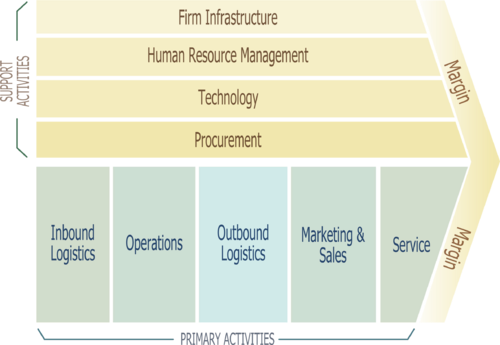
Back to the Value
January 28, 2020
Thirty-Five years ago, when the Value Chain Model was first introduced, procurement was viewed narrowly as cut and dry cost savings. But as suppliers become more citizen-centric, central procurement officers (CPOs) need to become more value-aware of procurement’s unique position. Public procurement should no longer be viewed narrowly for cut and dry cost savings, but for the additional value the procurement process can add as a strategic partner. 
I’m not the type of person to argue with an expert, but I would suggest an update to Porter’s original Value Chain Model. Procurement is listed as a secondary or support service. In 2020 this is an outdated concept.
Procurement in 1985 focused on the value of providing raw materials to the primary activities identified in Porter’s model. If you think of the procurement function through this limited, traditional lens, it might seem secondary. However, in modern procurement CPOs can be regarded as a resource for competitive advantage and can contribute directly to the creation of value and, therefore, added value to policy agendas for the state.
Fortunately, creating and harvesting value isn’t a totally new concept to public procurement. CPOs are now gauging value in new dimensions. In 2020, procurement decisions are based upon people and the planet, not just profits. Public procurement is one of the sole agencies that can realize quality and sustainable results at the supply chain supplier level because of the unique position of CPOs.
Is your state interested in taking steps in sustainable purchasing? Procurement can help.
Is your new administration focusing on customer service and agency stakeholders? Procurement can help.
Maybe your Governor is looking to cut waste and maximize efficiencies across the board. Guess what? Procurement can help with that too.
To create additional value, procurement must align itself cross-functionally. Due to its rare business-critical function in the public sector, CPOs should be consciously touting the additional value and policy initiatives that can be carried out through procurement.
In 2020, I encourage you to aid in this update needed in Porter’s Value Chain and start with your home state. Take the necessary steps to draw connections to the added value your procurement office can offer. This opportunity is a chance to become a leadership contender in your state. Become value–centric. In the meantime, I’ll send Porter an email to update his model because much like A Flock of Seagulls-styled hair… sometimes, we need to change the way we see things.
